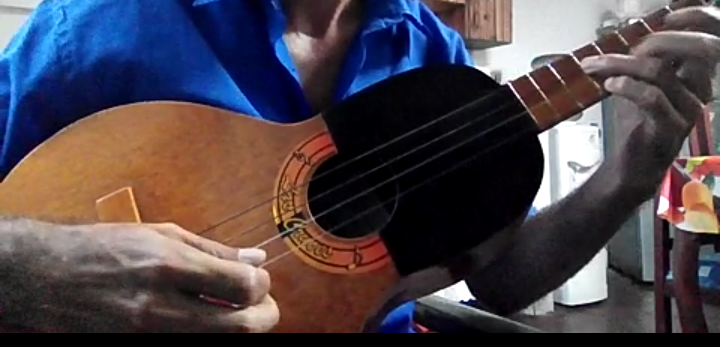Rugged, arrogant, deep, flat, eastern, central, western....Venezuelan.
Talking about the joropo is an exciting subject for me. The joropo is the most representative music of Venezuela, it is also a dance and a party. I will try to summarize for you what the joropo is, explaining some of its most popular variants. I'm going to show you some original micro videos with the bandola llanera, one of the instruments used to play joropo. I will also name some joropos from other regions of Venezuela.
A bit of history....
The joropo is descended from the Spanish fandango, but to your surprise (as it was mine to investigate) the fandango is of African origin as well as almost all the musical genres we call Caribbean come from Africa. The joropo also comes from the influences of Arab music, around the ninth century approximately, an Arab musician named Ziryab took more than ten thousand songs to the Iberian Peninsula, spreading them over what we know today as Spain. Thanks to the Africans with their sesquial rhythms, Ziryab and their lute, we have this great variety and musical richness.
Arriving in our lands.
During the time of discovery and conquest, all that whirlpool of information and culture came to us, and we adapted it to our indigenous roots. The people of the aristocracy and the great cacaos celebrated their feasts with European style. The natives, the African slaves and the mestizos were observing and trying to imitate in a mocking way the dances they saw, danced and tapped, and the joropo was born as a dance, with the music developing in parallel, forbidden by the Spaniards and the authorities of the colony for considering it banal, low and even blasphemous. They were never able to silence the feeling that was being born and the joropo was growing and developing in the bowels of our land. That's how it began to be heard on the plains: the little bird or bird, the six by right, the coat, the parakeet, the buzzing buzzer, the quirpa. In the western central zone the tamunangue (black dance) with its spectacular movements like the six figureao, in the center: the "golpe tuyero" and "aragueño". In the east the joropo with chorus, in the south the joropo guayanés and later in the Andean regions.
The word Joropo comes from a deformation or adaptation of the word Xarop, which was transformed into syrup (Mexico) and then became joropo.
Musical instruments.
To perform and play the joropo, the llanera harp, the Venezuelan cuatro, the maracas and the electric bass are commonly used. It is believed that the bandola llanera was used since the time of independence for recreation in the breaks of the battles, because the harp was heavy enough to be carried by soldiers. There are different types of bandoles, the llanera bandola, oriental bandola, guaribera bandola, and guayanesa bandola. The mandolin, or bandolin, is used in the east for the chorus joropo. Now, the joropo is played with a wide variety of musical instruments. In the Colombian plains you can also play and sing very good joropo.
[Image of my property]
Examples of joropo llanero
Trying to summarize the vast repertoire of joropos in a single article is a titanic task, that's why I'm going to put you some micro videos, of 1 minute each, of joropos llaneros with bandola llanera.
Zumba que Zumba
Seis por Derecho
Periquera
Chipola
And the most rugged... Pajarillo
Thank you for taking the time.




Maravilloso! me encantas con tu música. te tengo un reto: enseñar a tocar cuatro o guitarra a una zurda sin oído musical. ajajaja lo aceptas? Si pudiera dar miles me gusta lo haría complacida.
Jajaja. Gracias. Reto es reto y el venezolano es de la altura que se presente. 😄👍
Es lo que dicen, aajajaja tremenda tarea una guara!!
Great post! Thanks for sharing.
Resteemed!
Thanks!